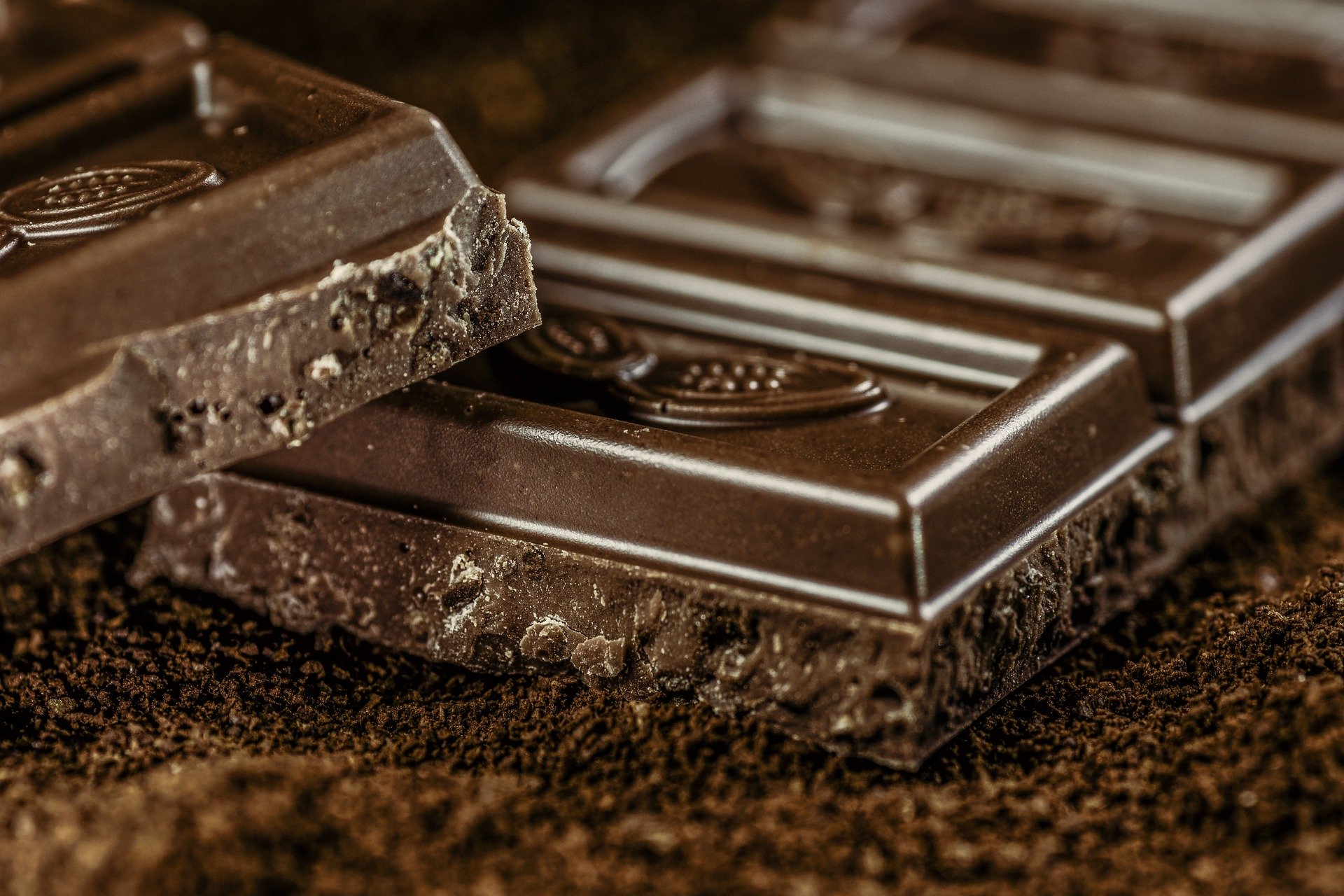Chocolate: From Bean to Bar
Chocolate is one of the most beloved foods in the world. It is consumed in various forms and has a rich history that spans centuries. Let’s explore the different types of chocolate, its health benefits, regional differences, and fun facts.
Types of Chocolate
Chocolate comes in various forms, each with its own unique flavor and texture. The most common types of chocolate include:
Dark Chocolate: This type of chocolate is made with a higher percentage of cocoa solids and less sugar. It has a bitter taste and a rich, smooth texture. Dark chocolate is the healthiest type of chocolate because it contains antioxidants and minerals such as iron, magnesium, and zinc.
Milk Chocolate: Milk chocolate is made with cocoa solids, milk powder, and sugar. It has a creamy texture and a sweet taste. Milk chocolate is the most popular type of chocolate worldwide.
White Chocolate: White chocolate is made with cocoa butter, milk powder, and sugar. It has a sweet and creamy taste and a light color. However, it does not contain any cocoa solids, so it is not technically chocolate.
Ruby Chocolate: Ruby chocolate is a new type of chocolate that was invented in 2017. It is made from ruby cocoa beans and has a pinkish-red color. Ruby chocolate has a fruity and sour taste with a creamy texture.
Health Benefits of Chocolate
Chocolate is often viewed as a guilty pleasure, but it actually has some surprising health benefits. Here are a few of them:
Contains Antioxidants: Dark chocolate contains high levels of antioxidants, which help to protect your body against free radicals that can cause cell damage.
Lower Blood Pressure: Studies have shown that consuming dark chocolate regularly may help to lower blood pressure due to the flavanols found in cocoa.
Improves Mood: Chocolate contains a compound called phenylethylamine, which is known to increase serotonin levels in the brain. Serotonin is a neurotransmitter that can improve mood and reduce stress.
Boosts Brain Function: Cocoa contains caffeine and theobromine, which are stimulants that can improve brain function and mental performance.
Regional Differences
Chocolate is consumed all over the world, but different regions have their own unique chocolate traditions. Here are a few examples:
Belgium: Belgium is famous for its high-quality chocolate. Belgian chocolate is often made with high-quality cocoa beans and has a rich, smooth texture.
Switzerland: Switzerland is also known for its chocolate. Swiss chocolate is often made with milk and has a creamy texture.
Mexico: Chocolate has a long history in Mexico, dating back to the Aztecs. Mexican chocolate is often made with cinnamon and has a slightly spicy taste.
Italy: Italian chocolate is often used in desserts and has a creamy texture. Italian chocolate is also known for its hazelnut flavor.
Where Is Chocolate Grown?
Chocolate is derived from the cocoa tree, also known as Theobroma cacao. These trees are primarily grown in tropical regions near the equator, such as West Africa, South America, and Southeast Asia.
Cocoa trees are small evergreen trees that can grow up to 30 feet tall. They have a bushy appearance with thick, waxy leaves and produce small white or pink flowers that grow directly from the trunk or branches. After pollination, the flowers develop into large, colorful pods that contain cocoa beans.
Cocoa trees prefer a warm, humid climate with temperatures ranging from 20-30°C (68-86°F) and an annual rainfall of at least 1,500 mm (59 inches). They require well-drained soil that is rich in organic matter and nutrients, with a pH range of 6.0 to 7.5.
Most world cocoa production comes from West Africa, particularly Ghana and Ivory Coast, which account for nearly 60% of the world's cocoa supply. Other major cocoa-producing countries include Indonesia, Nigeria, Cameroon, and Brazil.
In terms of appearance, cocoa trees have a unique and striking appearance with their glossy, dark green leaves and colorful pods. The pods themselves can vary in size and shape depending on the variety of cocoa tree, but they generally have a rough, textured exterior and are anywhere from yellow to red in color.
Cocoa trees thrive in warm, humid climates with nutrient-rich soil. The regions where they are grown influence the flavor and quality of the chocolate that is produced, making chocolate a truly unique and regional product.
How Are Cocoa Beans Made Into Chocolate
After cocoa beans are harvested from the cocoa tree, they undergo a series of processes to turn them into chocolate. Here is a brief overview of how cocoa beans are made into chocolate:
Fermentation: The first step in the process is to ferment the cocoa beans. This is done by placing the beans in large, shallow containers and covering them with banana leaves or other materials to keep them warm. Over the course of several days, natural yeasts and bacteria break down the pulp surrounding the beans, resulting in a complex flavor and aroma.
Drying: Once the beans have been fermented, they are spread out in the sun to dry. This helps to remove any remaining moisture and stabilize the flavor of the beans.
Roasting: After the beans have been dried, they are roasted to develop their characteristic chocolate flavor. This is done by heating the beans to high temperatures for a specific amount of time, which also helps to remove the outer shell of the bean.
Grinding: The roasted beans are then ground into a paste called cocoa liquor. This paste contains both cocoa solids and cocoa butter.
Conching: The cocoa liquor is then further refined through a process called conching. This involves mixing the paste with other ingredients such as sugar and milk powder and heating it to a specific temperature while continuously stirring it. This helps to develop a smooth texture and flavor.
Tempering: The final step is to temper the chocolate. This involves cooling the chocolate to a specific temperature while stirring it to ensure that the cocoa butter crystals are evenly distributed. This helps to give the chocolate its characteristic glossy appearance and snap when it is broken.
After tempering, the chocolate can be molded into various shapes and forms, such as bars, truffles, or chips. The specific recipe and techniques used can vary depending on the type of chocolate being made, as well as the preferences of the chocolatier.
Chocolatiers
There are many famous chocolatiers around the world, each with their own unique style and approach to making chocolate. Here are 10 well-known chocolatiers:
Lindt & Sprüngli: A Swiss chocolatier founded in 1845, known for their smooth and creamy milk chocolate and iconic gold-wrapped chocolate truffles.
Godiva: A Belgian chocolatier founded in 1926, known for their luxurious and indulgent chocolate truffles and gift boxes.
Valrhona: A French chocolatier founded in 1922, known for their high-quality and complex chocolate flavors, often used by professional pastry chefs and chocolatiers.
Ferrero Rocher: An Italian chocolatier founded in 1946, known for their unique hazelnut-filled chocolates and golden foil-wrapped packaging.
Ghirardelli: An American chocolatier founded in 1852, known for their smooth and rich chocolate bars and iconic chocolate squares.
Leonidas: A Belgian chocolatier founded in 1913, known for their wide variety of handcrafted pralines and truffles.
Neuhaus: A Belgian chocolatier founded in 1857, credited with inventing the chocolate praline and known for their elegant and sophisticated chocolate creations.
Jacques Torres: An American chocolatier known as "Mr. Chocolate," with several locations in New York City, known for his innovative flavor combinations and handcrafted chocolate sculptures.
Vosges Haut-Chocolat: An American chocolatier founded in 1998, known for their unique and exotic flavor combinations, such as bacon and chocolate or wasabi and chocolate.
Amedei: An Italian chocolatier founded in 1990, known for their artisanal approach to chocolate making and their award-winning chocolate bars and truffles.
Fun Facts
Here are a few fun facts about chocolate:
The first chocolate bar was invented in 1847 by a British chocolate company called Fry's.
Chocolate was used as currency by the Aztecs and Mayans.
The world's largest chocolate bar weighed over 12,000 pounds and was made in Italy in 2000.
The scientific name for the cocoa tree is Theobroma cacao, which means "food of the gods."
In conclusion, chocolate is delicious and versatile. So go ahead and indulge in some chocolate today!


Kate, I’m a recovering chocoholic and I’m intrigued by all the information you’ve share in this article. I’ve never seen or heard about ruby chocolate. I’ll be on the lookout for it.
So many people love chocolate but don’t know how it’s made from cocoa beans! Such an informative blog on chocolate, one of my favorites. I never use to care for dark chocolate but since so many now add raspberry to it, that’s now my favorite!
I’m not really a chocolate person, except for hot cocoa and ice cream sandwiches. But I do notice what a great mood booster it can be, and have used it that way on purpose.